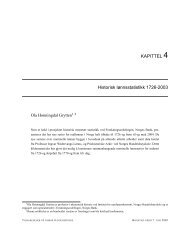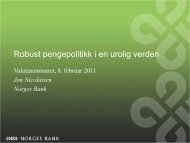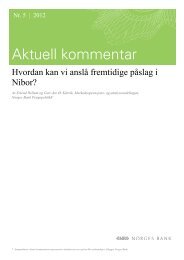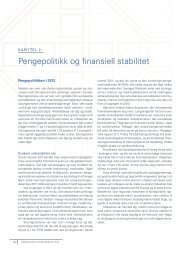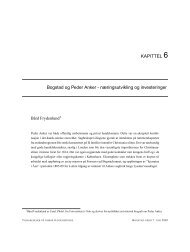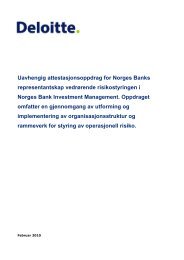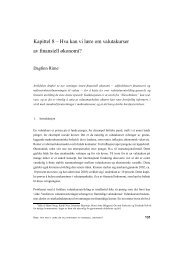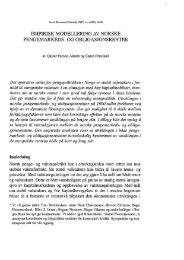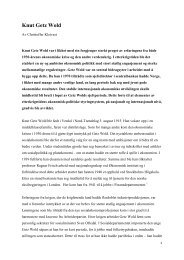Mellom politikk og marked? En studie av ... - Norges Bank
Mellom politikk og marked? En studie av ... - Norges Bank
Mellom politikk og marked? En studie av ... - Norges Bank
Create successful ePaper yourself
Turn your PDF publications into a flip-book with our unique Google optimized e-Paper software.
Abstract<br />
This master thesis is a study of the Monetary Policy Department in the <strong>Bank</strong> of Norway<br />
(BoN), the International Monetary Fund (IMF), and the question of the Norwegian monetary<br />
and credit policy around 1965-1980. The main ambition of the project was to study the<br />
relationship between the IMF and BoN, both at institutional and at the participant level. There<br />
was also a desire to study both international experience, through the economist’s participation<br />
with IMF’s consultations with other countries, and the point of view, and thereby knowledge<br />
regimes, the economist’s in the Monetary Policy Department expressed in monetary and<br />
credit policy issues. In order to study verifiable point of view it here mainly focus on the<br />
printed debate, which has been supplemented with interviews when this has been possible.<br />
The three angles were examined in two chapters that covered the periods 1965-1973 and<br />
1974-1980. In 1973, the Magnussen Committee submitted its report and expressed a desire to<br />
move towards market-determined interest rates. At the same time there was a significant<br />
recruitment growth in the bank. Especially in transition between the 1960 and 1970 century,<br />
an increasing number of new young economists were employed by the Monetary Policy<br />
Department in BoN.<br />
This thesis argues that the relationship between the IMF and BoN, both at institutional level<br />
and at the participant level, showed that the monetary and credit policy in Norway drew<br />
criticism from both the IMF and BoN. The survey of foreign visit showed that economists at<br />
BoN could draw experiences from other countries that used other instruments, mainly a<br />
flexible interest rate and market operations, than the Norwegian legislation g<strong>av</strong>e access to.<br />
The printed debate showed that some of the economists at BoN published a greater extent<br />
than others, and some, such as John Petter Holter and Forsbak was more explicit in his<br />
criticism of the Norwegian monetary and credit policy. The analysis also showed that without<br />
the study of consultation meetings and overseas visit to the elected economists at BoN the<br />
presentation of BoN’s economists could h<strong>av</strong>e been different. In the printed debate only few<br />
explicitly expressed disagreement in the monetary and credit policy.<br />
The analysis also showed the diversity of the economist in BoN although they had the same<br />
educational background. This shows the problems with using the "Oslo school" on a group of<br />
economists only basted on the connection to the background of education.<br />
iii



